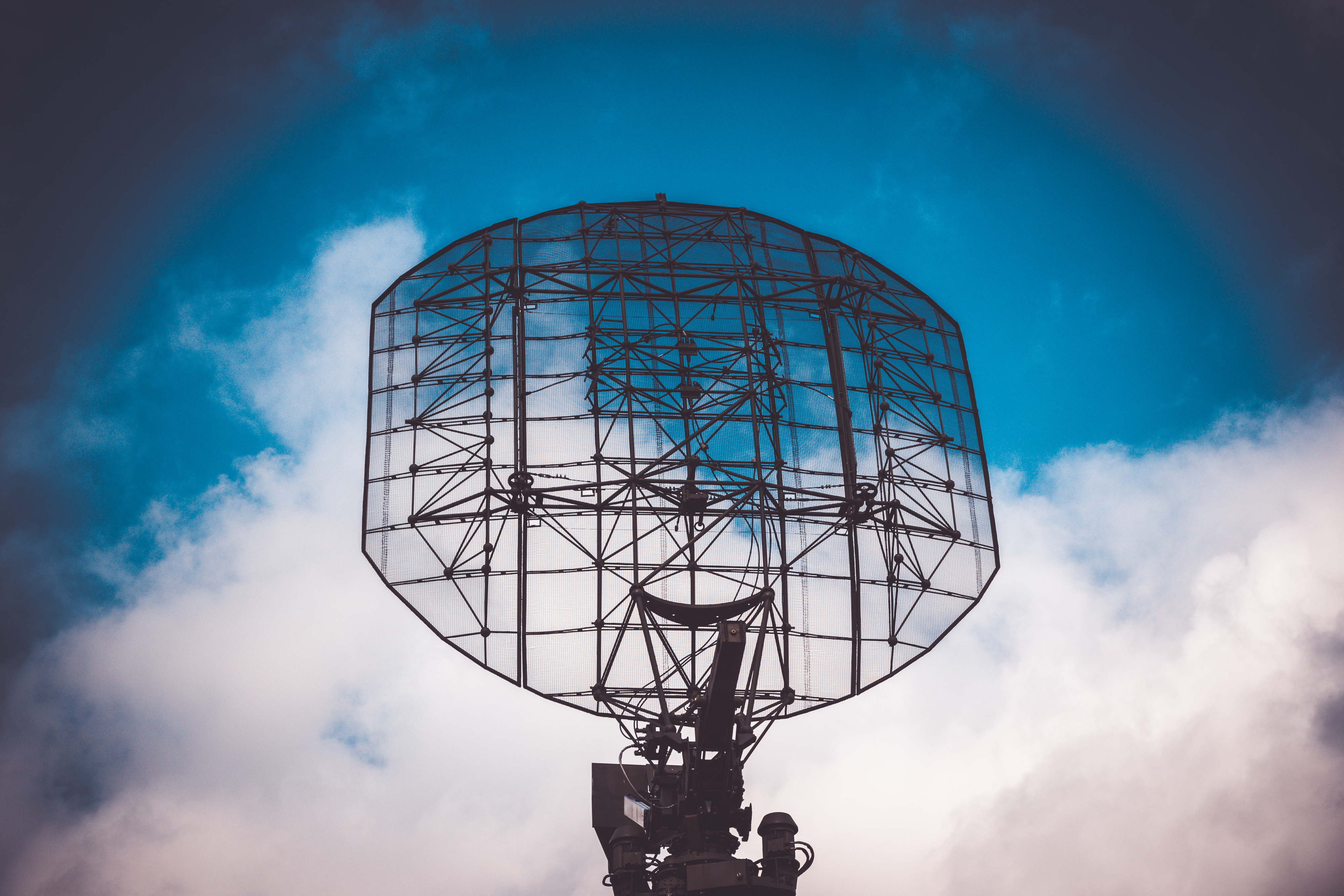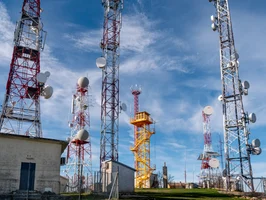Summary HF radar provides strategic over-the-horizon (OTH) detection in the 3-30 MHz band, but this...
How Radar Filters Ensure Signal Clarity and System Reliability

A radar system's detection range is not merely a function of its transmit power. It is often dictated by its receiver's resilience in a contested spectrum. A hostile jammer or a powerful adjacent-band communication signal can drive a sensitive low-noise amplifier (LNA) into deep compression. This saturation event raises the system's noise floor, effectively masking weak target returns long before they reach the analog-to-digital converter.
For military and aerospace systems, this is a critical failure. Additionally, you cannot find the solution in digital processing; you must solve it in the analog domain using robust RF preselection. A high-performance radar filter is the component that protects the receiver's dynamic range, isolates the signal of interest, and ensures the system remains sensitive even in a hostile electromagnetic environment.
This article explains how these filters function, explores the types used in defense and aerospace, and details why their design is so critical to system performance.
How Radar Filters Maintain Clarity in Advanced Radar and EW Systems
Radar filters are fundamental components that condition the RF spectrum before a signal reaches sensitive receiver stages. Their purpose extends beyond simple frequency selection. They actively protect the receiver from overload, preserve the clarity of target echoes, and define how well a radar system operates in a contested electromagnetic environment
On the receive path, bandpass filters known as preselectors sit before the low-noise amplifier (LNA) and mixer, blocking strong out-of-band signals that originate from nearby communication links or hostile jammers. This protection prevents the LNA from entering compression, a state of saturation that raises the noise floor and masks weak target returns. Engineers frequently use high-Q cavity and combline filters in microwave radar bands because they provide very steep rejection slopes/skirts with minimal in-band insertion loss.
Meanwhile, at the intermediate frequencies (IF), filters provide additional selectivity and maintain the radar's pulse integrity. If a filter introduces excessive amplitude ripple or a non-linear phase response across its passband, it distorts the radar pulse shape. This distortion directly degrades digital pulse compression performance, lowering the signal-to-noise ratio and reducing range resolution. A filter with a flat amplitude and linear phase response preserves the precise timing accuracy that advanced radar systems require.
Filters on the transmit side perform two critical functions. In systems that share a single antenna, a duplexer acts as a filter assembly that routes the high-power transmit signal to the antenna while simultaneously protecting the sensitive receiver from that same power. Transmit filters also suppress unwanted harmonics and spurious emissions generated by the power amplifier. This cleanup prevents interference with other friendly communications or navigation systems and protects the radar’s low probability of intercept (LPI) characteristics by reducing detectability. Effective transmit filtering maintains spectral purity and ensures system resilience in complex electromagnetic environments.
The Varieties of Radar Filters and Where They Apply
Different missions demand distinct radar filter designs. The correct filter technology is always a trade-off that depends on the operating frequency band, the severity of the environment, and the overall system architecture.
Flight Radar Filters for Airborne Defense Platforms
Airborne radars on defense platforms face some of the most difficult operational challenges due to their need to perform reliably in highly dynamic and contested environments.
- Flight-rated military filters must provide consistent electrical performance from a cold takeoff to the thermal stresses of high-altitude operation.
- In advanced multi-mode radar systems, the filters must maintain precise frequency selection and sharp rejection to prevent distorted returns.
To meet these demands, filters for flight platforms often require hermetic packaging, a robust sealing that prevents internal moisture buildup and ensures reliable operation during rapid temperature cycling, which can range from –55°C to +125°C. This construction also ensures the filter’s performance remains stable under the severe vibration and air pressure changes experienced during flight.
Filters for Pulse Integrity and Range Resolution
Many modern radar systems use pulse compression to achieve fine range resolution. This technique relies on transmitting complex modulated pulses, such as linear-frequency "chirps." The integrity of this pulse shape is paramount, as the radar's processor must precisely match the received echo to the transmitted waveform.
The RF filter plays a key role in preserving pulse integrity, with amplitude ripple and group delay variation being the two most critical parameters. A filter with a non-linear phase response or significant group delay ripple will distort the signal. This distortion effectively smears the pulse in time, which raises the sidelobes of the compressed pulse after digital processing. High sidelobes can mask the returns from smaller nearby targets, thereby degrading range resolution and detection capability.
Therefore, radar systems that depend on pulse compression require specialized RF filters. These filters must be specified not only for their rejection but also for their flat amplitude and linear-phase response across the passband/operational bandwidth. This ensures a clean, undistorted pulse is delivered to the digitizer, which allows the radar's digital matched filter to achieve its maximum theoretical performance.
Filters for High-Rejection and Receiver Protection
A radar's receiver must be sensitive enough to detect faint target echoes, often in the presence of extremely strong, unwanted signals. These interfering signals can come from hostile jammers or even high-power friendly communications operating in adjacent frequency bands.
If these powerful out-of-band signals are not blocked, they will reach the receiver's low-noise amplifier (LNA). This can easily drive the LNA into saturation or compression. A saturated LNA raises the entire system noise floor, which effectively blinds the receiver and makes it impossible to detect the weak target echoes.
This is the primary function of a high-rejection preselector filter. The filter provides deep attenuation to all signals outside the radar's specific operating band, which in turn protects the LNA. It then preserves the receiver's dynamic range and ensures that the digital processors receive a clean signal. This allows the digital filters to then successfully perform their own task of separating moving targets from in-band ground or sea clutter.
Specialized and Custom Radar Filters
Some radar systems require unique filter characteristics. For example, radar filters and laser radar filters (used in optical or hybrid systems) can be customized for specific passbands or mechanical layouts. Engineers may adjust bandwidth, rejection levels, or packaging to match mission needs.
For defense and aerospace applications, that flexibility is very important. Each radar system has its own size, frequency, and environmental limits. Custom engineering ensures filters integrate properly with mixers, limiters, and amplifiers, reducing the risk of redesigns or performance drift once deployed.
Radar Filter Parameters That Influence RF System Performance
Radar filters must balance performance, durability, and integration. Each parameter contributes to how clearly the radar receives and interprets its signals.
|
Parameter |
Impact on Radar System Performance |
|
Insertion Loss |
A low insertion loss is critical for maintaining receiver sensitivity and ensuring weak, distant target echoes remain detectable. |
| Selectivity and Skirt Sharpness | Defines how well the filter rejects nearby signals, such as communication channels, preventing interference and passband distortion. |
| Power Handling and Linearity | (Primarily for transmit filters) Determines the filter's ability to withstand high pulse power without failure, distortion, or degradation over time. |
| Phase Linearity and Group Delay | Inconsistent phase or group delay can distort pulse shapes, which blurs echoes, reduces timing accuracy, and can affect Doppler accuracy. |
| Integration and Impedance Matching | A mismatch with other components (such as LNAs or mixers) can cause signal reflections and distortion, compromising overall system stability. |
Achieve Reliable Radar Performance with Q Microwave
Radar performance depends on more than transmit power or receiver sensitivity. Signal clarity begins with proper filtering. Poor filtering can hide weak targets, distort pulses, and create overload conditions that limit range and accuracy.
Q Microwave helps defense and aerospace teams solve these signal problems with high-performance filters and integrated assemblies.
Q Microwave filters deliver:
- Sharp frequency selectivity with low insertion loss
- Hermetic, rugged construction to survive harsh environments
- Stable performance across temperature and vibration extremes
- Seamless integration with limiters, mixers, and amplifiers
- Comprehensive documentation and long-term support for defense programs
Ready to solve your toughest signal challenges? Reach out to Q Microwave to start a conversation about filters and integrated assemblies built to perform in mission-critical environments.




